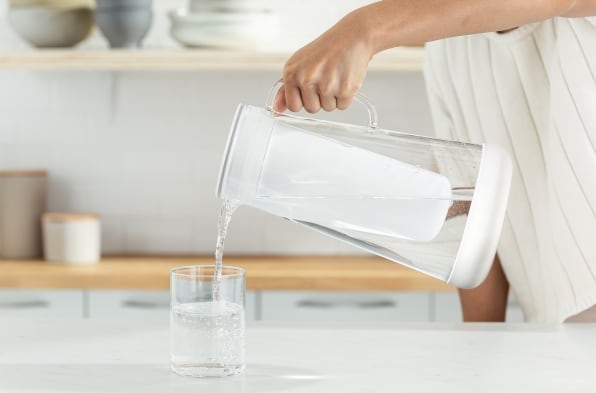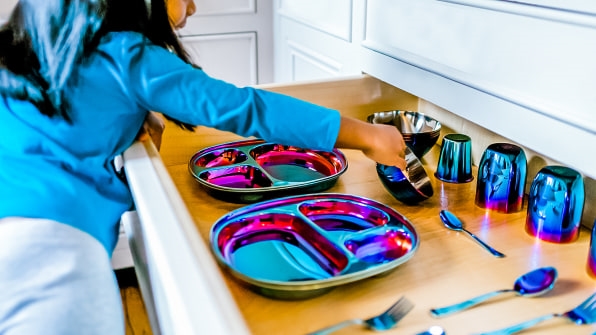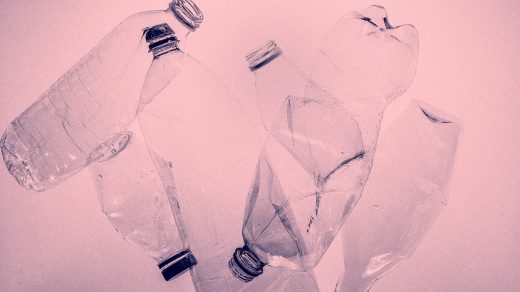Microplastics seep into our water and our bodies. These products may help
The microplastics crisis is far worse than we first thought.
For half a century, humans have incorporated plastic into every aspect of our lives, from kids’ toys to food packaging. Yet 91% of plastic doesn’t get recycled, ending up in landfills and the ocean, where it breaks into tiny particles called microplastics. Over the past five years, scientists have discovered microplastics in dust, fruit, drinking water, rain, and the atmosphere. They’ve also been found in human lung tissue and bloodstreams, as well as in infants’ bodies.
Scientists are only just beginning to understand exactly how widespread microplastics are in our environment and their impact on human health. But experts say it’s worth taking some precautions now, particularly since the problem is only going to get worse. And there are now more products on the market that can reduce our exposure to microplastics.
Dick Vethaak, a professor emeritus of ecotoxicology at Vrije Universiteit Amsterdam, has been studying microplastics for a long time. In 2016, he sounded the alarm about their potential dangers on the human body and helped kick-start research on the subject.
“What we know for sure about microplastics is that they are everywhere in our biosphere,” he says. “We eat, breathe, and drink them constantly.”
Vethaak says we still don’t fully understand how the body processes microplastics, which are smaller that 5 millimeters, and nanoplastics, which are smaller than 1 micrometer. These particles may be small enough to enter cells, disrupting cellular activity. In studies with rats, microplastics were found to cause inflammation in the small intestines, low sperm count, and smaller babies.
Albert Koelmans, an environmental scientist at Wageningen University in the Netherlands, doesn’t believe our current exposure to microplastics is causing damage—yet. The problem is that plastic consumption is rising. “I am a bit concerned about the future if we do nothing,” he told the scientific journal Nature.
Given how ubiquitous microplastics are, Vethaak acknowledges that it would be very difficult to rid ourselves of them completely.
“They are ambient particles, like others in our environment, like exhaust from cars or specks from a barbecue,” he says, noting that it’s worth taking steps to reduce our exposure to these potentially toxic particles, the way we do with other toxins in our environment. “Making lifestyle changes and changing out some products are quick wins that can reduce our overall exposure by a bit.”
The ultimate solution, Vethaak says, is for countries to work at a systemic level to reduce global plastic consumption and redesign products to cut out plastic. “The situation will only get worse unless we intervene,” he says.
Here are some tools already on the market worth considering.

Water Filters
Microplastics have been found in drinking water. Some U.S. states are taking steps to ensure that municipal filtration plants filter them out, as they do with other pollutants. But there are also home water filters designed to filter out microplastics, including a recent collection from LifeStraw. There’s also a faucet filter called Tapp that promises to filter microplastics from your tap water.
Air Purifiers
During the pandemic, many people bought air purifiers that they hoped would filter out virus particles (the virus that causes COVID-19 is 0.125 micron—significantly smaller than a microplastic particle). Blueair, for instance, aims to rid the air of these particles. A German brand called Ideal also makes an air purifier that targets microplastics.
Vethaak says air purifiers can be helpful, but consumers need to consider how they’ll get rid of the debris collected by the filter. If you simply take it out and put it in the garbage can, you’re exposing yourself to the particles all over again. Ideally, you would quickly pop the filter into a waste bag that can be tied closed to avoid exposure.

Stainless Steel Drinkware and Tableware
Vethaak says drinking from plastic water bottles and eating from plastic plates can be problematic because they shed microplastics as they degrade. (Separately, microwaving plastic has been found to be unsafe because it leaches chemicals into the food.) This is particularly problematic with kid’s tableware, which is often made from plastic so it won’t break. The American Academy of Pediatrics encourages parents to use stainless steel or glass if possible.
To limit kids’ exposure to plastic, you can serve them food on regular ceramic dishes. But if you’re worried about breakage, stainless steel is a good bet. (It’s not microwavable but is dishwasher safe.) If you’re looking to make the swap, there are plenty of brands out there that make stainless steel products for kids. PlanetBox and Bentgo make lunch boxes for all ages, and Ahimsa, a brand founded by a pediatrician, has a line of stainless steel dinnerware that’s safe even for babies.
For adults, Vethaak suggests switching away from reusable plastic water bottles and choosing stainless steel products like those from S’well or using glass water bottles like those made by Soma. If you carry your lunch to work, it makes sense to use stainless steel as well.
Washing Machine Filters
All the products we’ve shared so far are designed to protect us from microplastics. But can we do anything to protect the planet?
We know that synthetic clothes—activewear, swimsuits, and polyester garments—shed microplastics in the washing machine. Products like the Guppyfriend and the Cora Ball are designed to trap microplastic fibers so they don’t end up in the water. Vethaak says these are well-intentioned and can help raise awareness about microplastics in waterways.
And, of course, reducing our personal impact on the environment is certainly worth doing. But if we use these products, we should be conscious that it’s a tiny drop in the bucket considering the vast amount of microplastics that end up in the ocean.
Vethaak believes that eventually all washing machines will feature built-in filters that remove microplastics. Electrolux has already released a machine that traps nanoplastics. “Again, the key will be figuring out how to remove the debris from the machine, so we don’t ingest these microplastics,” Vethaak says.
Future Solutions
As we learn more about microplastics, companies are developing creative new solutions that will help us get them out of our environment. Some aren’t ready for market just yet, but could be soon. The most interesting ones use nature itself to protect us from pollutants.
A moss filter, for instance, is designed to naturally capture and filter out microplastics from water before you drink it. And mussels are known for filtering enormous amounts of ocean water every day, leaving behind microplastics. Scientists are developing strategies to use mussels as a tool to eradicate microplastics from natural environments.
(22)



